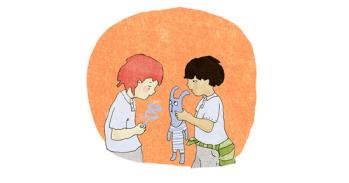
Less than half of mums meet the recommended levels of moderate-to-vigorous physical activity – and mothers of younger children manage to do the least, Cambridge and Southampton researchers have found.
Less than half of mums meet the recommended levels of moderate-to-vigorous physical activity – and mothers of younger children manage to do the least, Cambridge and Southampton researchers have found.
When you have small children, your parental responsibilities can be all-consuming, and it’s often hard to find the time to be active outside of time spent caring for your children
Kathryn Hesketh
Physical activity – particularly when it is moderate to vigorous – has many health benefits, decreasing the risk of a wide range of diseases from cancer to type 2 diabetes and cardiovascular disease, as well as helping maintain a healthy weight and better mental health.
Evidence suggests physical activity can help parents cope with the daily challenges of being a parent and strengthen relationships with children if they are active together. However, parents tend to be less active than non-parents.
To examine how family composition affected the amount of physical activity mothers engaged in, researchers at the University of Cambridge and University of Southampton analysed data from 848 women who participated in the UK Southampton Women’s Survey. The women, aged 20-34 years, were recruited between 1998 and 2002 and followed up over subsequent years. They were given accelerometers to assess their levels of activity. The results are published today in PLOS ONE.
Women with school-aged children did on average around 26 mins* of moderate-to-vigorous physical activity per day, whereas mothers with only younger children (aged four years or under) managed around 18 mins* per day.
Having more than one child meant mothers managed only around 21 mins* of moderate-to-vigorous physical activity per day, but interestingly, mums with multiple children all under five years old did more light intensity activity than those with children of school-age.
Less than 50% of mothers met the recommended levels of moderate-to-vigorous physical activity (150 minutes per week), regardless of the ages of their children.
Dr Kathryn Hesketh from the Medical Research Council (MRC) Epidemiology Unit at the University of Cambridge said: “When you have small children, your parental responsibilities can be all-consuming, and it’s often hard to find the time to be active outside of time spent caring for your children. Exercise is often therefore one of the first things to fall by the wayside, and so most of the physical activity mums manage to do seems to be of a lower intensity.
“However, when children go to school, mums manage to do more physical activity. There are a number of possible reasons why this might be the case, including more opportunities to take part in higher intensity activities with their children; you may return to active commuting; or feel more comfortable using time to be active alone.”
Rachel Simpson, a PhD student in the MRC Epidemiology Unit, added: “There are clear benefits, both short term and long term, from doing more physical activity, particularly if it increases your heart rate. But the demands of being a mother can make it hard to find the time. We need to consider ways not only to encourage mums, but to make it as easy as possible for busy mums, especially those with younger children, to increase the amount of higher intensity physical activity they do.”
Professor Keith Godfrey from the MRC Lifecourse Epidemiology Centre and the NIHR Southampton Biomedical Research Centre said: “It is perhaps not unexpected that mothers who have young children or several children engage in less intense physical activity, but this is the first study that has quantified the significance of this reduction. More needs to be done by local government planners and leisure facility providers to support mothers in engaging in physical activity.”
*Note: these are mean averages
Reference
Simpson, RF et al. The association between number and ages of children and the physical activity of mothers: cross-sectional analyses from the Southampton Women’s Survey. PLOS ONE; 16 Nov 2022; DOI: 10.1371/journal.pone.0276964

The text in this work is licensed under a Creative Commons Attribution 4.0 International License. Images, including our videos, are Copyright ©University of Cambridge and licensors/contributors as identified. All rights reserved. We make our image and video content available in a number of ways – as here, on our main website under its Terms and conditions, and on a range of channels including social media that permit your use and sharing of our content under their respective Terms.




